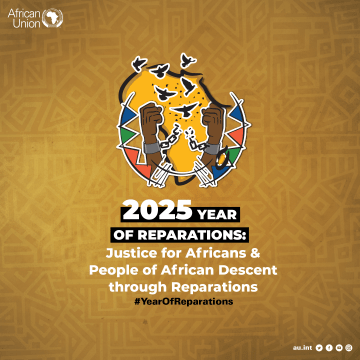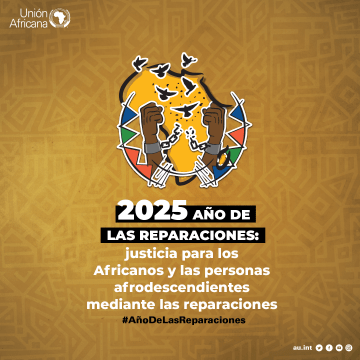A/ Introduction
1. On 26 April 2018, during the 62nd Ordinary Session of the African Commission on Human and Peoples’ Rights (the Commission), in Nouakchott, Mauritania, a Panel Discussion on the Implementation of the Guidelines for the Policing of Assemblies by Law Enforcement Officials (the Guidelines) took place. The Panel was organized under the auspices of the Commission’ Special Rapporteur on Prison, Conditions of Detention and Policing in Africa, Honorable Commissioner Maria Theresa Manuela, with the technical support of the Danish Institute for Human Rights (DIHR), the African Policing and Civilians Oversight Forum (APCOF) and the financial support of the European Union.
2. The Panel was chaired by Honorable Commissioner Maya Sahli Fadel, Member of the Commission and Special Rapporteur on Refugees, Asylum Seekers, Migrants and Internally Displaced Persons.
3. The Panel focused on discussing matters relevant for the effective implementation of the Guidelines. Six (6) panelists made presentations and this was followed by an interactive discussion with the participants.
B/ Presentations
4. The first speaker, Honorable Commissioner Maria Theresa Manuela welcomed the participants. She recalled that the Guidelines were adopted during the Commission’s 21st Extraordinary Session held from 23rd February to 04th March 2017 in Banjul, The Gambia pursuant to article 45 (1) (b) of the African Charter on Human and Peoples’ Rights (the Charter).
5. Commissioner Manuela indicated that the Guidelines are part of the soft laws of the Commission but stands as an authoritative interpretation of article 11 of the Charter, focusing on what the police should do to respect the right to freedom of assembly and other related rights. She explained that the Guidelines provide guidance to State Parties to the Charter with respect to what should be done before, during and after an assembly, to ensure the respect of the right to freedom of assembly by Law enforcement Officials. Commissioner Manuela invited the participants to listen to the various presentations which dealt with matters relevant for the effective implementation of the Guidelines.
6. The second Speaker, Mrs. Josiane Somdata Tapsoba-Koné, Consultant of the DIHR on Police & Human Rights, focused her presentation on the Role of Key Stakeholders in the Implementation of the Guidelines. Mrs. Koné started her presentation with this question: Who has a role to play in the implementation of the Guidelines? She responded by indicated that both States and Non-state actors have an important role to play but that the State has the primary responsibility to implement the Guidelines.
7. With respect to States responsibility, Mrs. Koné indicated that all the three powers, the Legislative, Executive and Judiciary have a role to play in the implementation of the Guidelines. She argued that there are gaps between the provisions of the Guidelines and national laws governing public order policing. She took the example of prior notification to assemblies which is still mandatory in some States Parties to the Charter while the Guidelines provides that the lack of such notification does not render an assembly illegal and should not be the unique reason for Law enforcement officials to disperse the assembly.
8. Mrs. Koné therefore highlighted the need for the Legislatives of State Parties to harmonize national laws in accordance with the provisions of the Guidelines. She also pointed out the need for Governments to provide the necessary sensitization and training on the Guidelines for Law Enforcement Officials including adequate equipment for policing assemblies. With respect to training, Mrs. Koné invited States to go beyond ad hoc trainings and put in place more robust training programs through initial and in-service training provided to the Law Enforcement Officials.
9. She indicated the importance for States to provide information on the implementation of the Guidelines in their periodic reports submitted to the Commission by virtue of Art 62 of the Charter. Mrs. Koné noted that no right can be effective if there is no sanction upon violation and therefore highlighted the need for the judiciary to prosecute, judge and punish those responsible of violence occurring during assemblies, even if they are Law Enforcement Officials.
10. With regards to Non-State Actors, Mrs. Koné, indicated that National Human Rights Institutions (NHRIs) with their mandate to promote and protect human rights have an important potential to work towards the implementation of the Guidelines. She cited the Independent Police Oversight Mechanisms as key institutions that should monitor the action of Law Enforcement Officials during assemblies and undertake actions favorable to the establishment of responsibilities when violence occurs during assemblies. She also mentioned that Civil Society Organizations can provide support to the States through sensitization and training of police officers on the Guidelines, they can advocate for its effective implementation at the national level and provide information related to through shadow reports transmitted to the Commission.
11. Mrs. Koné highlighted that the role of the Commission is key in the implementation of the Guidelines, as it can sensitize on the Guidelines, adopt concluding observations based on the Guidelines, make use of the Guidelines during the consideration of communications and undertake others relevant actions. She also mentioned that regional and international organizations should consider providing technical and financial support to States for the implementation of the Guidelines.
12. Mrs. Koné concluded by inviting participants to keep in mind the fact that when we watch with dismay images like the one of a police officer raising his leg to “clobber” a demonstrator already on the floor and who surrendered, it is not always the sole responsibility of the officer which is engaged. It is most of the time the failure of a whole system; a system that did not guide the officer with rules that are compliant with the regional and international standards; a system that failed to provide adequate training and working condition to the officer; and a system where the judiciary failed because it did not prosecute and punish authors of such precedents, encouraging the repetition of such actions. She recalled this statement of Hon. Pansy Tlakula, former Chairperson of the Commission: “when the policing of assemblies goes wrong, no one wins: police officers become victims, protestors become victims, and the country is the ultimate victim”. Mrs Koné therefore invited all stakeholders to join hands in order to put an end to violence during assemblies.
13. The following presentation was made by Mr. Edmond Tapsoba, Principal Commissioner of Police and Commanding Officer of the “Companies Républicaines de Sécurité” (riot control forces) in Burkina Faso”. Based on his experience as Police Officer, he spoke about Challenges faced by Law Enforcement Official during Assemblies. He identified four (4) key challenges.
14. The first challenge mentioned by Mr. Tapsoba is the need for national laws to be harmonized with the Guidelines. To explain this challenge, he gave examples such as the requirement for prior notification of assemblies that is still mandatory at national level when the Guidelines do not consider the lack of notification as a reason to declare an assembly illegal or disperse it. He also cited the fact that according to the Guidelines, the primary role of law enforcement officials in policing assemblies is to ensure the safety of the public and to safeguard human rights of all persons. He however highlighted the challenge in ensuring this role when the police is not notified of the organization of the assembly. He also recalled the fact that the Guidelines provide that the military personnel deployed to assembly operations must be subordinated to and under the command of, the police authorities, but that this is not always the practice at national level.
15. As a second challenge, Mr. Tapsoba pointed out the lack of appropriate training for Law enforcement officials. He recommended that the training on the Guidelines and facilitation of assemblies in general should include practical exercises and be integrated in the initial and in-service training programmes. He insisted on the fact that training centers should be provided with the necessary equipment to include scenario simulation in the training of officers.
16. The third challenge mentioned by Mr. Tapsoba is the lack of appropriate equipment made available to the Police. Mr. Tapsoba considered that if the individual and collective equipment meant to protect police officers during assemblies is not adequate enough to protect them, they tend to react in a disproportionate manner when they receive attacks from protestors. He recommended that appropriate equipment should be provided to Law Enforcement Officials including less-lethal weapons.
17. As a last key challenge, Mr. Tapsoba regretted the absence of administrative and local authorities in the process of facilitating assemblies when the Guidelines encourage their involvement in negotiations and to des-escalate tensions.
18. The following speaker Mr. Andrew Songa, Program Manager- Transformative Justice at the Kenya Human Rights Commission focused his presentation on the Links between the Resources provided to the Police and the Use of Force during Assemblies. Mr. Songa regretted the fact that the use of force and fire arms sometime appears as a first tactic used by Law Enforcement Officials in different countries in Africa, when it is supposed to be a measure of last resort. Mr. Songa argued that this situation is due to a number of challenges.
19. The first challenge derives from the fact that Law enforcement Officials deployed to assemblies tend to be equipped with firearms and this makes deadly force the first tactical response. This situation is exacerbated by the fact that the use of firearms tend to be indiscriminate, leading to the loss of innocent lives. A second challenge mentioned by Mr. Songa is the lack of crowd control weapon and/or their improper use. He explained that even though those weapons are supposed to be less lethal, their improper use can severely affect the health of protestors and lead to death in some instances. The third challenge is the fact that Law enforcement Officials use force in an operational environment marked by a lack of transparency and clear chain of command and control structure; this situation does not facilitate communication between organizers of assemblies and Law enforcement officials, nor does it facilitate the establishment of responsibilities when rights are violated.
20. To tackle the challenges identified, Mr. Songa recommended the following: Law enforcement Officials should use force only as a last resort when other means such as dialogue fails; when force has to be utilized, it should be proportionate and targeted at the security threat and not indiscriminate; and that firearms must only be used when the situation relates to a violation of the right to life that cannot be stopped by less lethal means. He also recommended that the use of crowd control weapons must be informed by comprehensive and advance testing and that there must be sufficient oversight and accountability mechanisms to the use of force. Mr. Songa concluded by indicating that the Guidelines will strengthen the freedom of assembly if embraced by Member States interested in reforms.
21. One of Mr. Songa’s recommendations which is the establishment of oversight and accountability mechanisms was further developed by the next speaker, Dr. Thomas Probert, Extraordinary Lecturer, Institute for International and Comparative Law in Africa (University of Pretoria). His presentation focused on Internal and External Oversight and Accountability Mechanisms for the Policing of Assemblies.
22. Dr. Probert indicated that the Guidelines are not the first document highlighting the importance of independent oversight of the police, but they do provide important detail about how such mechanisms should work. He reflected that, generally, accountability from a human rights perspective, has three core elements: an investigation aimed at establishing what happened; some form of remedy aimed at making good the situation for example by prosecuting the perpetrator, and by providing compensation or restitution to the victim; and, perhaps most importantly, the implementation of reform making structural changes aimed at ensuring that similar violations do not occur in the future.
23. Dr. Probert pointed out that the potential benefit of oversight mechanisms for investigations into police conduct was obvious. More often overlooked was their potential benefit in terms of reform. In reviewing the performance of oversight mechanisms, we sometimes focus too much on the number of police officers prosecuted and not enough on the need to implement reforms. This can be particularly important, he highlighted, in the context of the policing of assemblies, where outcomes can be significantly determined by tactics, equipment, and approaches. Without ongoing oversight and review, police departments might easily be repeating mistakes and failing to learn from experience.
24. Further to Dr. Probert’s presentation, Ms. Aminata Jawara Manga, Legal Officer at the Secretariat of the Commission presented the 11th edition of the Police and Human Rights Newsletter, which provides articles related to the implementation of Guidelines. Ms. Manga recalled that the Newsletter is part of the ongoing partnership between the Commission and its partners, the DIHR and APCOF and particularly developed under the auspices of the Special Rapporteur on Prisons, Conditions of Detention and Policing in Africa. The Newsletter has been produced with the financial support of the European Union and DANIDA. Ms. Manga listed all the nine (9) articles contained in the Newsletter as follows:
- Introduction to the Newsletter, by Honorable Commissioner Maria Teresa Manuela, Special Rapporteur on Prisons, Conditions of Detention and Policing in Africa;
- Understanding the Role of Key Actors in the Implementation of the Policing Assemblies Guidelines, by Louise Edwards, Programme Manager at APCOF;
- Implementation of the Guidelines for the Policing Assemblies by Law Enforcement Officials in Africa, Practical challenges, by Dr. Thomas Probert, Researcher;
- Observations on the ACHPR Guidelines in comparison to Nigerien law on maintaining and restoring public order, Mr. Ibrahim Toudou Daouda, Principal Commissioner of Police, Commanding Officer of the “Groupement des Compagnies Nigériennes de Sécurité”
- Remarks on public order legislation of Burkina Faso, Mali, Niger in relation to the Guidelines on policing Assemblies in Africa, Monique Alexis, Consultant on Security and Human Rights
- Understanding the role of local authorities in policing Assemblies: the case of Niger, Ibrahim Mariga, National Representative of the Danish Institute for Human Rights in Niger;
- Adressing the Challenges related to the use of force in policing assemblies in Africa, Mr. Andrews Songa
- Equipment provided to the police for assemblies facilitation: what is the use? Mr. Edmond Tapsoba, Principal Commissioner of Police Commanding Officer of the Compagnies Républicaines de Sécurité (riot control forces)/Burkina Faso
- News from the ACHPR Secretariat, Aminata Jawara Manga, Legal Officer at the ACHPR Secretariat.
-
25. Ms. Manga also informed the participants that the Newsletter is accessible from the Commission’s website on: http://www.achpr.org/files/news/2018/04/d333/11th_newsletter_en_fr_pt_ar_final.pdf
C/ Interactive Discussion
26. Following the various presentations, Hon. Commissioner Maya invited the participants to take the floor for questions and contributions as follows:
- The first contribution was made by the Sate delegate of Burkina Faso, who indicated that in order to map the gaps between what is taught and what ought to be in Burkina Faso, a study is being made on how human rights education is done in learning institutions including those of the police and security forces. This for him will result in an action plan to address these gaps and could also be an opportunity to include the content of the Guidelines in police school curricula.
- The second intervention came from the State delegate from the Democratic Republic of Congo (DRC), who indicated that organizers of an assembly are also sometimes responsible for the violence during assemblies and he wondered what should be done in that regard? He asked who is responsible in case violence occurs in the context of an assembly which is prohibited by the authorities because of exceptional security reasons?
- The Chairperson of the Commission Honorable Commissioner Soyata Maïga regretted the fact that even when demonstrations are authorized it ends with violence in most cases. In addition to the participants being victims, it happens that police officers themselves become victims of the violence. She insisted on the fact that it is important to determine who is responsible for the violence when it happens. The Chairperson welcomed the presence of a police officer in the panel and encouraged participation of the police hierarchy in such forums.
27. Mrs. Koné, responded to the representative of DRC by highlighting 3 points: first, the fact that the right to assembly is a right and not a privilege; secondly the fact that spontaneous assemblies should be allowed to happen in democratic States and that even when they are aware of spontaneous assemblies, Law Enforcement Officials should intervene to facilitate the assembly. Thirdly, with regard to the restrictions to assemblies and civilians responsibility in violence, Mrs. Koné recalled Guidelines 1 (2) (3) which provides that: “Participants and organizers’ of assemblies shall exercise the right to assemble with due respect to the right of others and in compliance with the laws in place which themselves should be consistent with the regional and international human rights standards”. She explained that if civilians are responsible for violence during assemblies there should be sanctions but that it is the national criminal laws of States to deal with such incidents, adding that the Guidelines do not intend to replace National Criminal Laws and Criminal Procedure Laws.
28. Commissioner Tapsoba added that in exceptional circumstances such as a State of Emergency, human rights should still be respected although some freedom can be restricted in such context. He indicated that if assemblies are organized during such time despite the fact that it is prohibited, and if violence occurs, it will be on the judiciary to establish the responsibilities and the perpetrators brought to justice.
D/ Conclusion
29. In her conclusion, Honorable Commissioner Manuela pointed out the few recommendations bellow:
- It is important to disseminate the Guidelines and to include them in training, both initial and in-service;
- The Police need to be provided with adequate equipment’s and trained on how to use them;
- National legislations also need to be revised to accommodate the Guidelines.
30. Following her closing remarks, Commissioner Manuela invited the panelists and all participants to stand for the launch of the 11th Edition of the Newsletter on Police and Human Rights in Africa.
******










